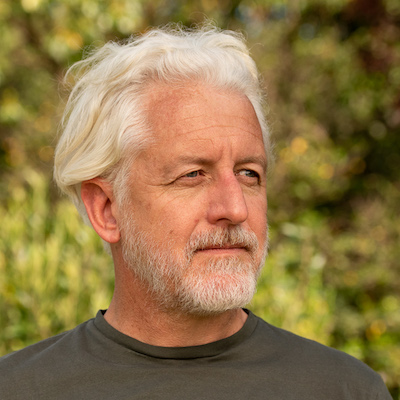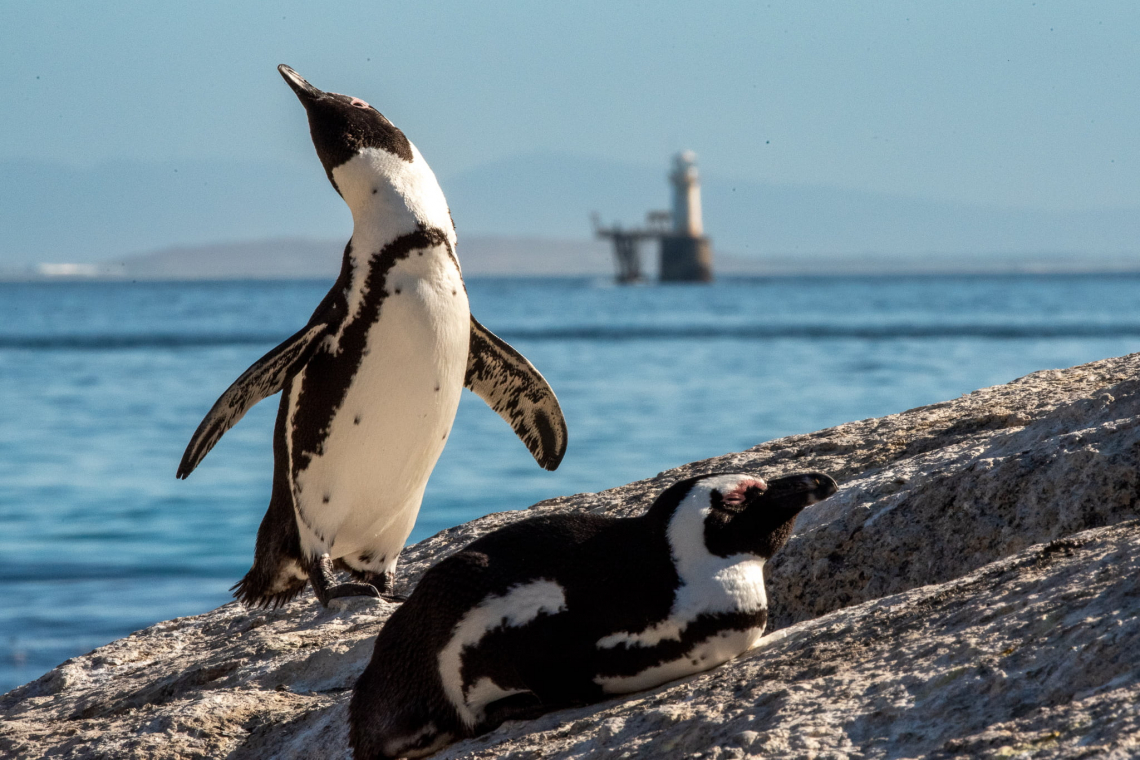It is not every day that you get a chance to see the fantastic work conservation heroes are doing to fight for an endangered species. I was fortunate enough to be given a tour by Romy Klusener, the head of SANCCOB’s bird rehabilitation program. Who is SANCCOB? SANCCOB was founded in 1968 to rehabilitate oiled penguins. Today SANCCOB is an African penguin and seabird sanctuary that looks after various coastal and pelagic species.
African Penguin Facts
The African Penguin’s scientific name is Spheniscus demersus. Also known as the ‘jackass’ penguin due to the donkey-like sound it makes, the African penguin is a flightless bird with distinct butler-like black and white feather patterns. Each bird can be recognised by a unique black spot pattern on the chest. The African penguin is quite nimble in the ocean, far more than on land, where a penguin-like waddle makes it look quite uncomfortable. In the sea, the penguin can swim at speeds up to 20km/h and dive down to 130m (SANBI).
African penguins eat fish such as pilchards, anchovies, horse mackerel and herring but may also eat some squid and crustaceans. The penguins travel far for food and will swim between 20-40km from the colony to find it. The African penguin forms monogamous breeding pairs.
The African penguin has many enemies who try to eat them, including seals, sharks and killer whales. On land, Cape genets, domestic cats and leopards hunt them. Their eggs and chicks are eaten by kelp gulls, herons, rats and sacred ibises. Breeding space is hard to come by, and they have to compete with humans and other sea animals for it.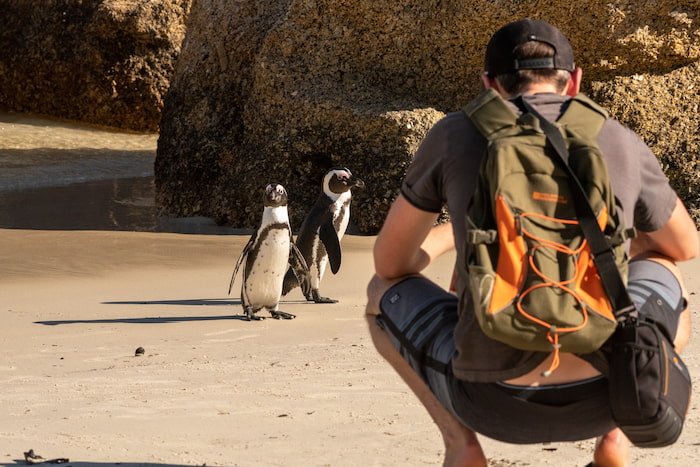
African penguins and tourist at Boulders in Cape Town
African Penguin Habitat and Distribution
The African penguin is endemic to the coast of Southern Africa. They can mainly be found on islands in the area but can be found in two main colonies on the mainland, namely Boulders Beach and Betty’s Bay. Tourists can view the penguins in these colonies in a controlled environment.

African penguins at Betty's Bay
African Penguin Endangered Status
The African penguin is in crisis and is classified as endangered, and currently (2021), only 10400 breeding pairs have been counted. This number represents a 73% decline in numbers from 1991. If the declines continue the African penguin could be functionally extinct by 2035. That is where the conservation heroes at the African penguin and seabird sanctuary SANCCOB come in.
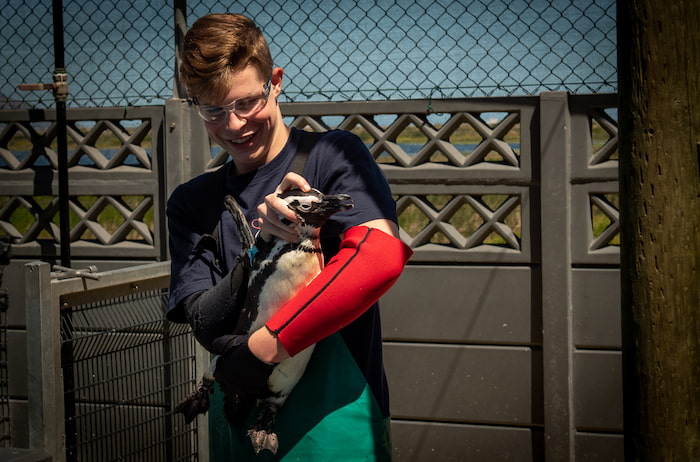
African penguin starts his swim training at SANCCOB
Reasons African Penguins come to SANCCOB
Originally SANCCOB was established due to oiled birds that needed to be cleaned. Today spills occur less, but ship-to-ship bunkering spills are still prevalent. Ships get refuelled at sea, fuel pipes get blown off, booms are not substantial enough, and spills occur. Other reasons birds come in include birds losing chicks, penguins getting hit by cars, and injured or ill birds. Ultimately SANCCOB has become just like a human hospital. A place for seabirds to be treated and released or housed if they are not deemed fit to be released.
2022 saw 470 penguins and 120 cape gannets come into SANCCOB for treatment. Not only are live birds accepted, but 400 eggs were also brought in this year for incubation. The reasons most sighted for eggs arriving include beginning-of-year abandonment and flooding of nests. Various other birds are treated and housed at the state-of-the-art facility.
The service does have its limits, though. SANCCOB regularly fileds calls by the public to come to remove roof nesting gulls from their coastal properties. As this is not a service SANCCOB provides, the public is requested to instead make their roofs undesirable for nesting birds.
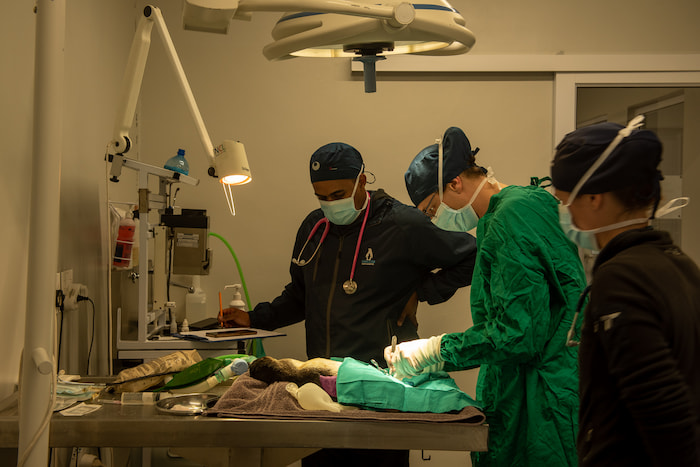
African penguin surgery at SANCCOB
The process of bird assessment, collection and rehabilitation
Every bird received at SANCCOB is recorded, and detailed information such as pain, depression, injuries, and welfare is monitored during its stay at the penguin and seabird sanctuary.
On average, every day, twelve volunteers and seven full-time staff, local and international interns, work tirelessly in the rehab section to rehabilitate birds and get them ready to be released back into the wild. It takes birds, on average, between two months and a year to be released back into the wild.
A big part of the process of rehabilitating and caring for the penguins and other seabirds, of course, includes food prep and feeding. Water preparation and monitoring are critical to keeping seabird waterproofing intact.
Veterinary care is provided in state-of-the-art operating rooms, with X-ray facilities fully rebuilt in 2018. On that day, I was lucky enough to be able to view a live penguin surgery. The vet Dr David Roberts performed a tibiotarsus fracture pinning on an African penguin. In plain English, Dr David repaired the penguin's broken leg.
Avian flu /Quarantine & Avian Malaria
Avian influenza has been a significant cause of seabird demise; in 2021, 20,000 cape cormorants died. This number represents between 10-20% of the endangered population. Besides the tragedy influenza had for the population, it caused severe logistical concerns for the staff. They had to make sure quarantine facilities had been provided off-site. All birds have to be tested for influenza before rehabilitation. Luckily the African penguin is less susceptible to influenza.
Besides avian flu, the birds need to be protected from avian malaria. Netting stops Mosquitoes and, ultimately, the birds from getting avian malaria.
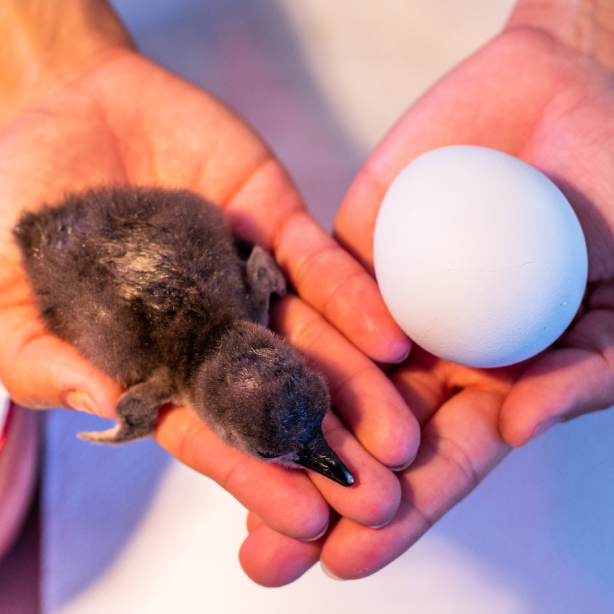
African penguin chick incubation at SANCCOB
African Penguin Breeding, Incubating Eggs and Raising Penguin Chicks
The SANCCOB seabird sanctuary has seven egg incubators and can host 40 penguins eggs per day for incubation. As the eggs are brought in with no idea of age and viability, SANCCOB has developed a process to use light to determine how old and the viability of the eggs.
Chicks in the incubators are fed all day, and interns work shifts between 5 am - 9/10 pm to keep the little ones fat and happy. Due to their low immune system and the chick's inability to thermal regulate, this is a very specialised role. SANCCOB is hoping to revamp the chick unit for more space. Public support is requested.
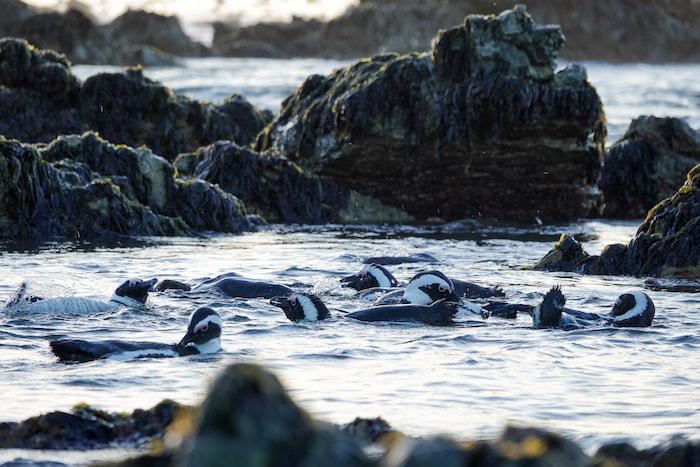
African penguins swimming at Betty's Bay
Releasing the African penguins
Releasing the penguins back to their habitat is a very happy occasion. The process of getting them ready for the occasion takes time. Each penguin is evaluated for their fitness. At first, they are taken for a no-force swim where they make the penguin takes a leisurely splash. Their down check gets checked to make sure they will be able to survive in the wild. Then the staged pool training starts; ultimately, each penguin needs to be able to swim for one hour before they can be released.
During the colony release, each bird is fitted with a transponder. Ground readers in the colony enable post-release monitoring. Birds rehabilitation success is monitored every step of the way. To date, the post-release transponder research has provided some state-of-the-art research.
To support SANCCOB and the valuable work they do, follow this link.
